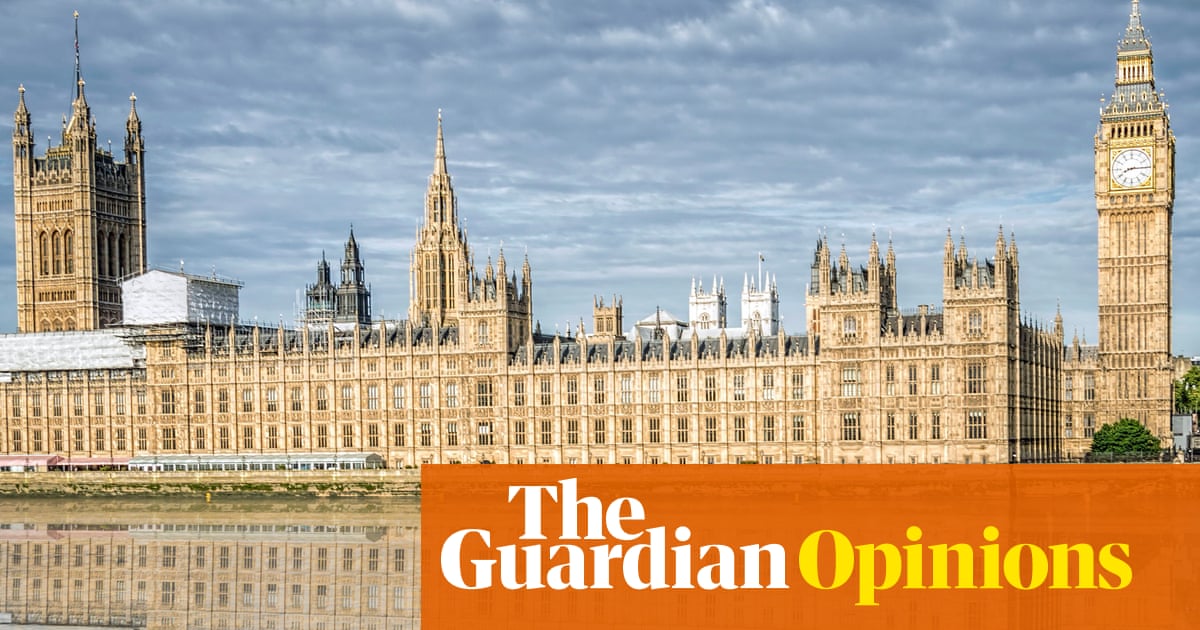
Green politics in Britain has always had a problem with scale. The disparity between the damage being done to the planet and the forces mobilised against it, in electoral politics and on the streets, has so far been painfully stark.
The first British Green party (originally called the People party) was founded in the early 1970s, when anxiety about the environment was almost as widespread as it is now. Its initial election manifesto was based on A Blueprint for Survival – a bestselling book that warned of “the breakdown of society and the irreversible disruption of the life-support systems on this planet” if the economic status quo continued. Yet it took another 37 years, until 2010, for Britain to elect its first Green MP, Caroline Lucas. The representative for Brighton Pavilion still remains the only Green in the Commons.
Our electoral system’s hostility to new parties has obviously held the
Greens back. But so has the tendency of environmental emergencies to leave voters feeling overwhelmed and paralysed, or in denial. Meanwhile in protest politics, even the clarity and ingenuity of groups such as Extinction Rebellion often seem to have only a fleeting impact. When its city-centre roadblocks have been cleared away, the usual traffic and consumerism return, almost as if nothing has happened. Green politics, somehow both too big and too small to gain sustained mainstream attention, seems stuck in its niche.
But there are signs that this may finally be changing. Last week the Scottish Greens announced a power-sharing agreement with the Scottish National party. If it is accepted at a members’ meeting on Saturday, the Scottish Greens will become the first British Green party to enter government.In England and Wales, the Greens already have a record number 0f councillors – 477 – with the vast majority of them elected since 2019. In May, the party came second in Bristol’s mayoral election with 44% in the run-off vote. In national opinion polls, support for them has doubled since the last general election, when it was already at a historically high level, and they are now running neck and neck with the Liberal Democrats.
The wider political context is also unusually favourable. In November, Britain is to host the UN’s climate conference. The government is talking a lot about the environment, while doing little. Meanwhile, Keir Starmer’s cautious leadership is pushing many of Labour’s younger, more radical supporters towards the Greens.
With the Lib Dems still tainted by their coalition with the Tories and tuition fees U-turn, in England at least there is nowhere else for these young voters to go. And with Labour looking unlikely to win the next election, the usual left-of-centre argument that voting Green is a wasted vote loses some of its force.Already, the line between leftwing and green politics in Britain is increasingly blurred. In recent years many thinkers and activists of both persuasions have concluded that unrestrained capitalism is the main cause of the climate crisis; and that, since the crisis is being disproportionately worsened by the rich and visited on the poor, the main solution is state intervention to create a more equal as well as greener economy.
During Jeremy Corbyn’s leadership, Labour became much more interested in the environment, and the Greens increasingly emphasised social justice. At the 2019 election, the two parties’ manifestos were hard to tell apart. Conventional wisdom now dismisses Corbynism as a dead end, but in the Green party many of its more promising ideas live on.
All these party-political shifts are being accelerated by the climate crisis. When environmentalism took off in the 1970s, the fears that motivated it often came from futurology. Now they can come from watching the news, or just looking out the window. It’s harder to dismiss the Greens as cranks, or their demands as political luxuries, when your garden is under water. “It would take an error for the party not to do very well in the next few years,” says a former adviser to Lucas.
But greater relevance brings new pressures. One is for the party to actually look like Britain. “In 2015 we had less ethnic diversity than Ukip,” says the former adviser. The party is bigger and broader now – in England and Wales it has at least a quarter as many members as the Tories – but it is still very white, especially compared with Labour.
Another challenge will be helping to govern Scotland. Being the SNP’s junior partner will involve difficult compromises – for example over the SNP’s plans to expand Scotland’s network of roads – which some Scottish Greens are already anticipating and criticising. Governing on a much smaller scale has already been what you might call a learning experience. In Brighton, the Greens’ longstanding stronghold, where as well as Lucas’s constituency the party controls the council, the Greens have stopped the municipal use of weedkillers. After a summer of unusually intense rainfall, some pavements are overrun with weeds. People have tripped on them and gone to hospital. In an era of climate crisis and its unpredictable consequences, green politicians may struggle to set the right balance between the social and the natural.
The new Green emphasis on equality is also proving divisive, inside the party. For at least three years, the English and Welsh Greens (the Scottish Greens are a separate party) have been split over trans rights. Last month the current leader, Siân Berry, decided not to stand for re-election because she believed the party’s pro-trans policy was not being consistently supported by her colleagues. The issue is featuring prominently in the ongoing contest to choose her successor.
The conflicts between generations and values that have made British politics so acrimonious now run through the Green party. They won’t be resolved simply by electing a new leadership. The German Green party, often held up as an example of where the British Green parties should be heading, has seen periods of electoral success and participation in national governments offset by internal battles and defections, over issues from pacifism to family values. Despite Germany’s system of proportional representation, which has given the Greens the parliamentary representation they deserve, their share of the vote in national elections seems to be stuck, at just under 9%. In 2017, it was only half a percentage point higher than 30 years earlier.
In Britain, as elsewhere, all the main parties may adopt significantly greener policies as the climate crisis worsens. That would clearly be a good thing, but would also make it harder for the Greens to differentiate themselves. The party needs to demonstrate its distinctiveness by achievements in office, and by more assertively pointing out when other parties’ environmentalism is just talk.
Unless the Greens consistently threaten to take a lot of votes from the main parties, progress towards truly green government will probably be slow, if it happens at all. And as Extinction Rebellion’s hourglass logo unsubtly suggests, the time for an effective green politics, whether it happens in the Green party or somewhere else, is getting short.












